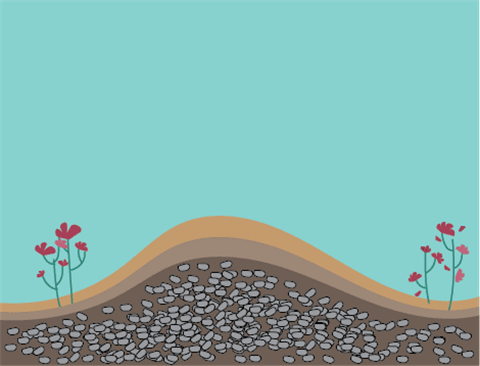How To Build a Berm

Berms are mounds of soil that slope into the surrounding landscape. Berms have a multitude of benefits and uses ranging from drainage to beautification of landscape design. Rain Gardens, bioswales and other elements of a sustainable landscape utilize berms, but berms can also be used individually to enhance a garden.
Follow these steps to help you build your berm(s):
- Choose the perfect place for your berm(s). The berm’s slope should be gradual to prevent erosion and blend into the surrounding garden. Crescent and kidney are the best berm shapes. There should be five feet of base for every one foot of berm height. Be mindful of berm placement as it can reroute water into parts of your landscape where it is not intended to go.
- Construct the shape of your berm. Create an outline of your berm and then dig out all sod and topsoil within the outline. Place a fill such as gravel or rubble in the hole and build up the berm to desired size, slope and shape. Keep fill about a foot or so away from the border of your berm as this area will be filled with topsoil. For a visual representation of berm layering please see: extension.umn.edu/garden/landscaping/implement/soil_berms.html.
- Apply layers to the berm. First, apply the clay soil layer over the entire berm and then rake it out and pat it down. Next, apply a layer of topsoil. Rake it out and pat it down. Spray water onto the topsoil layer to remove air pockets and then adjust thickness of soil layer according to desired plant coverage. Keep in mind that plants need at least 6 inches to a foot of soil to grow properly.
- Plant your berm with native plants, trees or shrubs.
Helpful Tips:
- Construct your berm to be asymmetrical rather than symmetrical by placing the peak of the berm more towards one end than the other. Asymmetrical berms are more efficient.
- If plants are on the west or south slope of the berm they will receive more sunlight and therefore experience higher temperatures. Select plant coverage based on temperatures throughout the year to give plants the best chance of survival.
- Maintain a thick layer of mulch on the berm to prevent soil erosion after heavy rain.
Helpful Links:
extension.umn.edu/garden/landscaping/implement/soil_berms.html